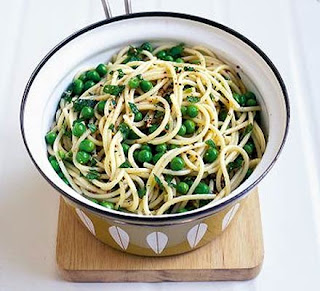Facing a dinner plate filled
with unfamiliar foods can be unnerving especially during a formal dinner or
business lunch. Equally challenging are
those foods we eat frequently but are known to squirt, spray, or splatter.
Knowing how to eat these difficult foods can really make all the difference
between having a miserable time or a fabulous one.
Seldom are we faced with
peeling an orange using only a fork and knife, a skill that can be quickly
acquired with a bit of practice. But we do encounter other foods that can be challenging. Today I address spaghetti and peas.
When eating spaghetti, unless
you are a child, do not cut the pasta. Likewise, do not snap it in half before
cooking it. This delightful food is meant to be twirled. Though some people
will correctly argue that Italians would never twirl spaghetti on a spoon, it
is a method used widely especially in North America. Capturing a few strands
with your fork tines and twirling them near the inner rim of your plate also ensures
a safe journey to the mouth. If the spaghetti is in a broth like sauce, no one
should wince if you use a spoon for twirling. The objective is to avoid
splattering yourself or your neighbors.
Peas roll. They can seem to
come alive on your plate and roll around as if to escape capture. Similar to
not cutting your spaghetti, do not mash your peas on your plate. There are
other far less barbaric and successful methods. Spearing for example is
perfectly acceptable. Incorporating peas with other foods simultaneously on
your fork is always helpful. Americans though can mount quite a pile on their
forks with the aid of either a knife or small piece of bread, a wonderful
edible pusher. I find they attach handily to mashed potatoes or almost anything
with a bit of sauce. Do not fall prey to the practical trap of using a spoon to
eat peas, unless you are a small child.


Wonderful post! I spent a lot of time in Little Italy learning how to twirl without a spoon - the trick is to pick up less spaghetti than you think!
ReplyDelete